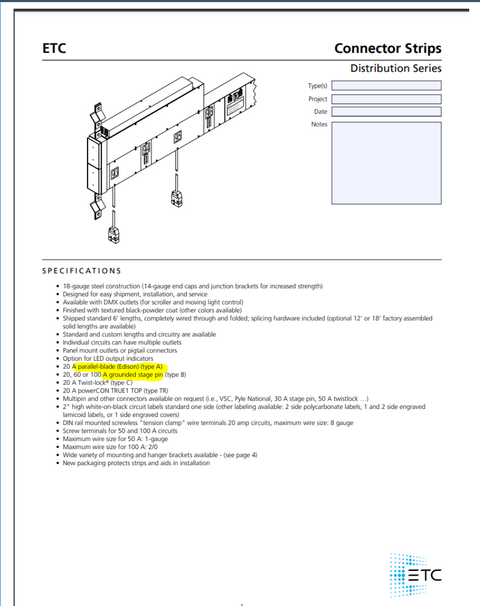I think everyone is forgetting histroy in why
stage pin and
stage plug. Two different plugs.
Stage pin plug I can date back to at least 1910 and have examples of the 10 or 15A version (in storage w/o able to see
rating, as with the 30a version.) At that
point twist lock plugs were not invented. Even
Edison plugs were not invented... (probably) instead was a slightly different version. I have an example, but it's also in storage. Electrical tape was not even invented for reference. Grounding was an option by at least 1910 or 1916, but only an option as with reflectors to the lights.
Stage pin plugs were in use and there is and has never been anything wrong with them more than any other type of
plug other than they might fall out of the
socket unless it's slot in the pin was inspected for knife based re-spacing need.
Around the mid-70's (in pre-dating me as a tech person), the
twist lock plug was invented. Not the
UL-Listed L5-20P, but a
twistlock - I believe in California came to market. Soon came the
twistlock now
NEMA L5-20P.
It was modern and especially in the days before the
Bates plug, was locking especially for areal connections.
Union Connector - the name brand for
stage pin plugs came up with a latching/locking
system for their plugs to fight this, but it was a lost cause. Unless you had something to lock onto the latch mechanism often became a bent problem in connecting.
So at that
point in the 70's and 80's stages and theater's started to became
twist lock. At least from what I remember.
The invention of the
Bates stage pin plug which could be tie lined together and was a great thing in the industry... News of it before the S-4
Leko came out was all over the place. That plus perhaps going back to on
distro's a 3/4"x2" knockout hole takes up a lot less space than a 1.3/8" Dia. hole for each
receptacle. This might have born a researgance in
stage pin plug usage during the 90's I think.
Where I work... started in early 99', there are specific markings for 208v cable. A purple stripe adjacent to the company label. I started that
system. These days, all the hundreds of
stage pin cables I made over the years are being converted to
Edison these days. And we are building 208v cables, much less True 1 cable builds. Very glad the PowerCon cable builds have gone away - the worst
connector... Kind of sorry
stage pin is going away. No real reason for that if well maintained.



